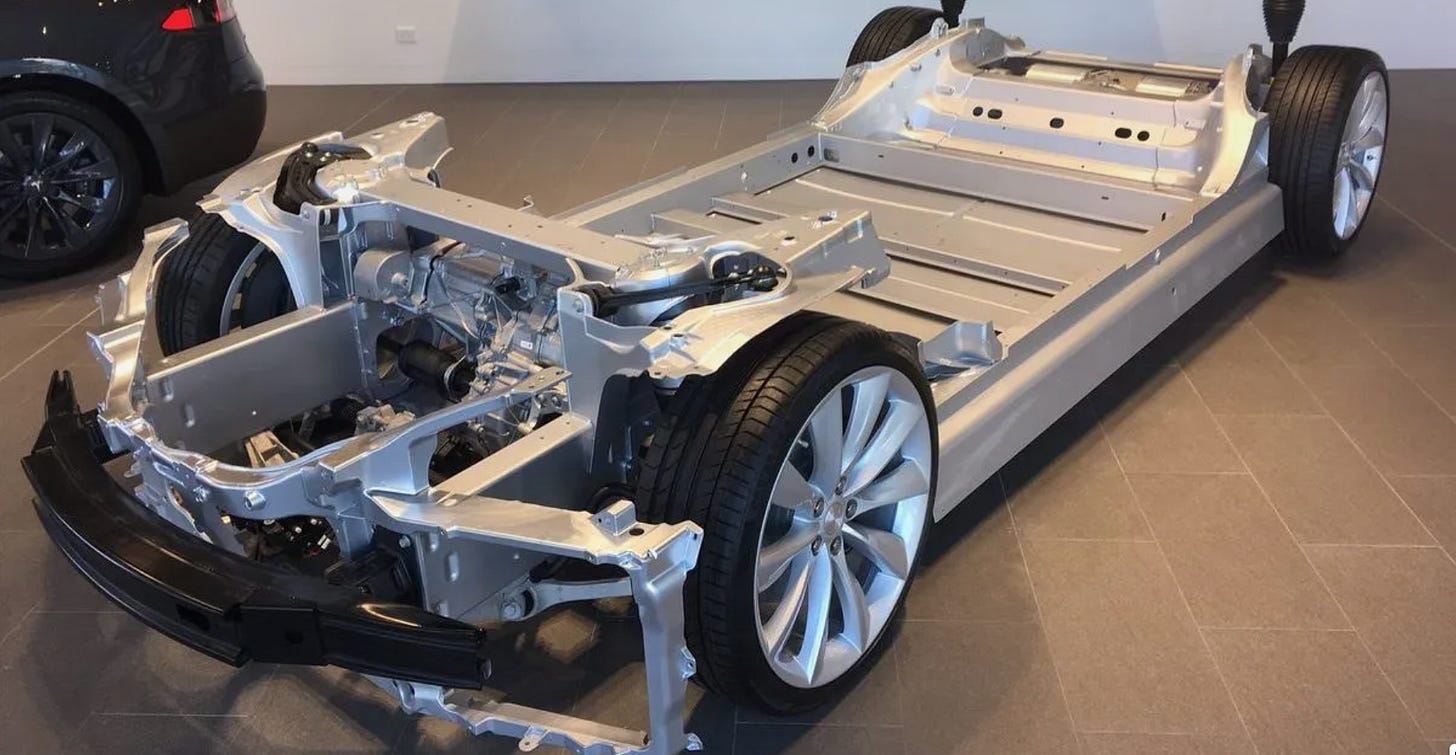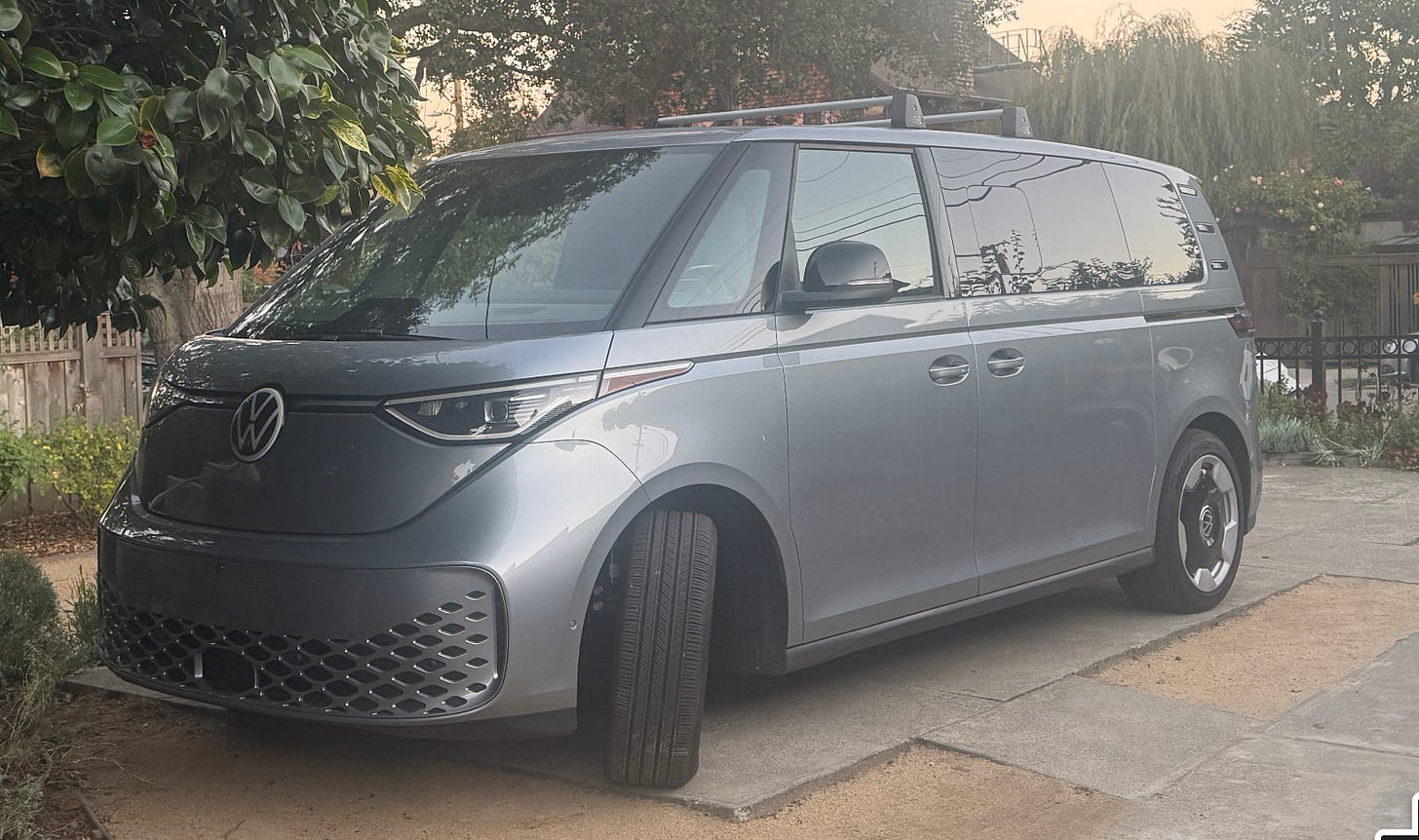What Happened with Elon Musk & the "CyberTruck", Anyway?
EV freedom vs. bunker aesthetics: how the Cybertruck squandered the skateboard, and misfired as its stainless shell met actual materials-science physics. A bold silhouette, a brittle reality: the CyberTruck as anti-humanist sculpture…
EV skateboards enable airy, efficient cabins, yet the Cybertruck chose bunker aesthetics and hostile apertures. It denies utility, comfort, and scale economics. Its success depended on creating a new tribe—call them the lovers of while demanding a new tribe to forgive the trade-offs. But it turned out that the original Tesla market segment of rich techbros who wanted to pledge allegiance to an electric and green future did not want the techno‑sovereign Mad Max post‑apocalyptic vibe of the CyberTruck, and with Musk’s kleptofascist political turn it turned out that the market for Dukes-of-Hazzard-themed CyberTrucks was very limited.
And now we are approaching the denouement:
Will Lockett: The Cybertruck Saga Is Getting Worse <https://www.planetearthandbeyond.co/p/the-cybertruck-saga-is-getting-worse>: ‘Before s*** officially hit the fan, Tesla had a gross profit margin of 20%, and Musk wanted to sell between 250,000 and 500,000 Cybertrucks a year at an average price of $80,000… between $4 billion and $8 billion in annual profit… to give Tesla its first genuine growth in years…. But no. The Cybertruck failed…. Broader context[:] The Cybertruck should have been a slam dunk for Tesla. They had the market and technology advantage, and yet….
Yet, somehow, people expect him to use AI robots — a field in which Tesla has zero market advantage and zero technology advantage — and be wildly successful? The Cybertruck is a monumental failure on a scale never seen before. It should destroy any notion that Musk knows what he is doing…. If it were any other CEO, he would have been driven out by now. The fact that he hasn’t been is deeply telling of what is happening behind the scenes at Tesla…
An electric vehicle is—or can be—a skateboard: a flat, self-contained chassis that houses the battery, motors, thermal management, crash structures, and control electronics, upon which you bolt a “top‑hat” of nearly any shape. That modularity has mattered for both engineering economics and product variety since the early 2000s, when GM’s AUTOnomy/Hy‑Wire experiments showed proof that propulsion and energy storage belong in the floor. The modern execution is everywhere: Tesla S/3/X/Y, Rivian’s quad‑motor “adventure”, Volkswagen’s MEB for the ID. family:
Consider our VW ID.BUZZ:
Take the skateboard’s flat floor and low center of gravity, then drop a faithful 1960s MicroBus “top‑hat” on it: Suddenly you have: maximal cubic volume for people and stuff, easy ingress and egress, and sightlines that feel more living room than cockpit.
It’s a nostalgia aesthetic doing real work: The retro form factor isn’t just charming. It’s packaging‑efficient.
And in Berkeley it doubles as social signaling: less “tech‑bro brutalism,” more “community‑minded practicality”, plus it makes us the object of great envy on the part of all of our 70‑something onetime-hippie or hippie-want-to-have-been neighbors.
So why, given all that design freedom, would you sculpt a vehicle into a maze of cramped corners and overhangs—functionally hostile, aerodynamically mediocre—and then finish it with the visual vocabulary of a dumpster? Most EV makers, and the earlier Tesla, used that freedom to produce swoopy forms with good aero, pleasant sightlines, and cabins that feel like rooms, not bunkers. Tesla, with the Cybertruck, chose instead a low-resolution triangle: severe planar stainless, abrupt edges, compromised apertures, a slit for a headlamp bar, and a cabin that reads as armored denial rather than welcoming space.
It certainly is not selling
Musk initially claimed that they had 1 million in reservations [with refundable deposits] for the Cybertruck and that production would scale quickly to 250,000 per year, with Musk expecting it to peak at 500,000 per year. Yet, by the end of 2024, Tesla had delivered just 39,900 Cybertrucks and unsold Cybertruck inventory began to seriously pile up. In other words, well over 96% of reservations were cancelled…
Well, if those reservations were actually there.
What do we know about how this—to me—incomprehensible set of visual and spatial design considerations came to be? My (somewhat informed) guess is this: Manufacturing theory collided with physics, regulation, ergonomics, and trucks-as-tribal-signal—and then lost coherence.
Let me expand on that in five parts:


